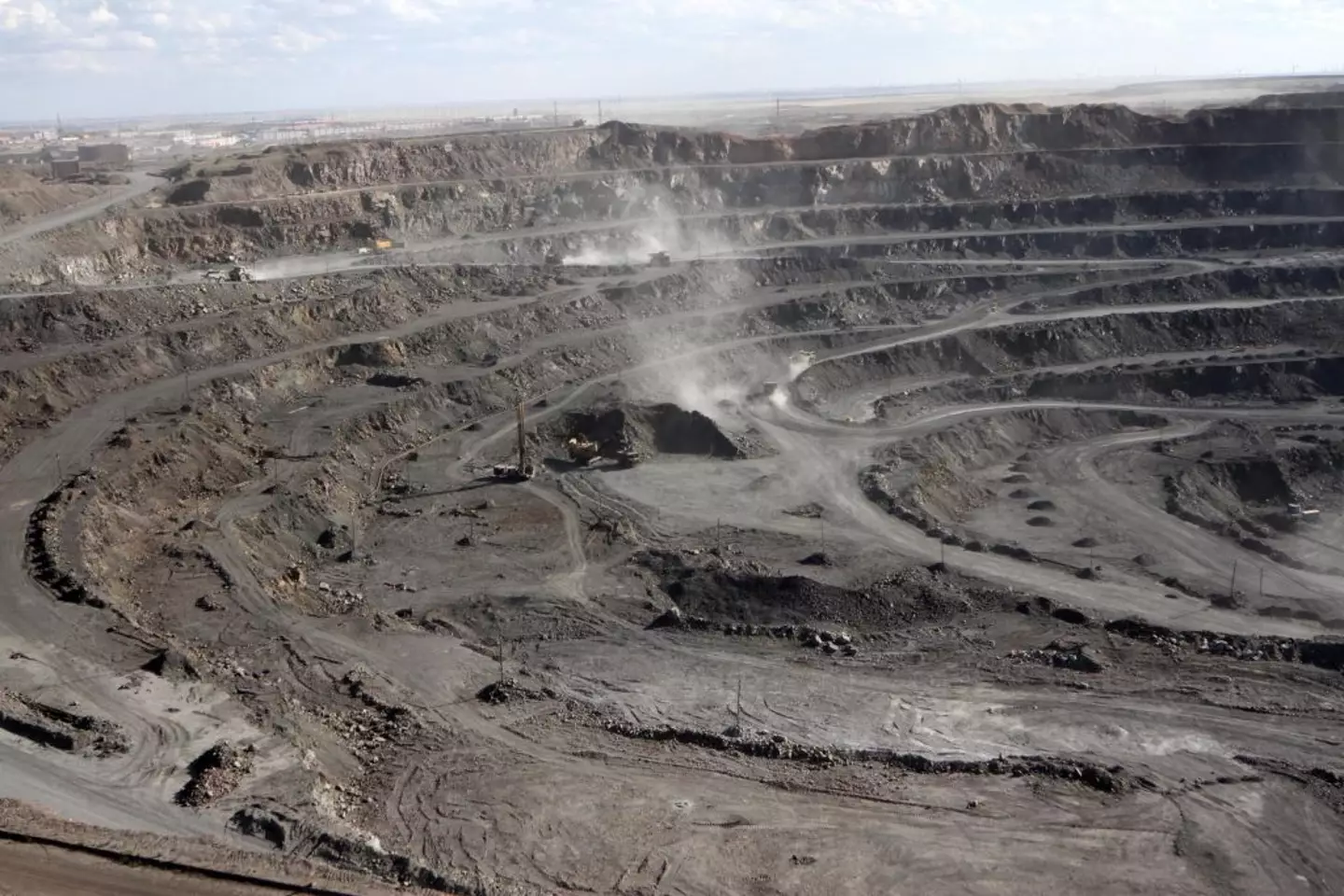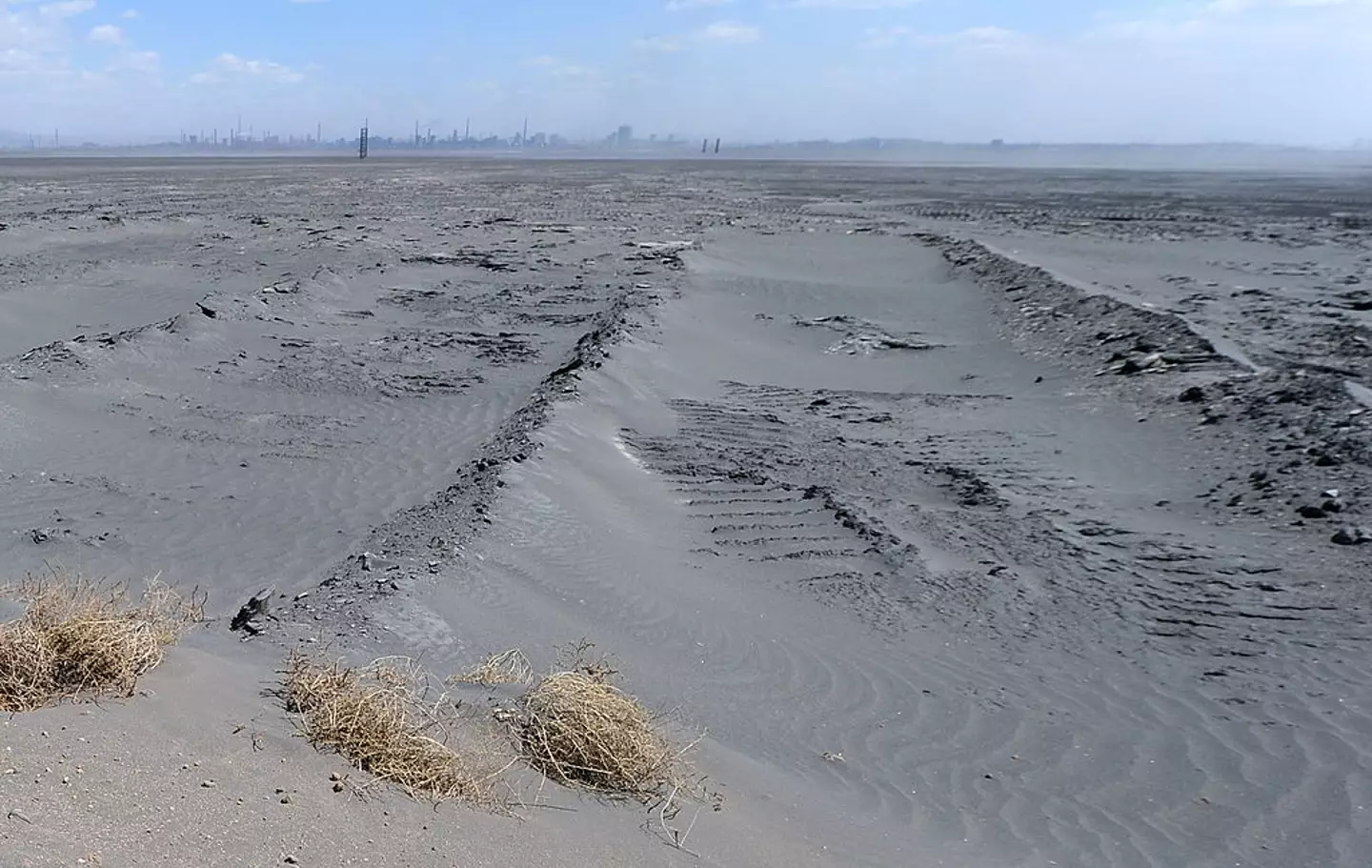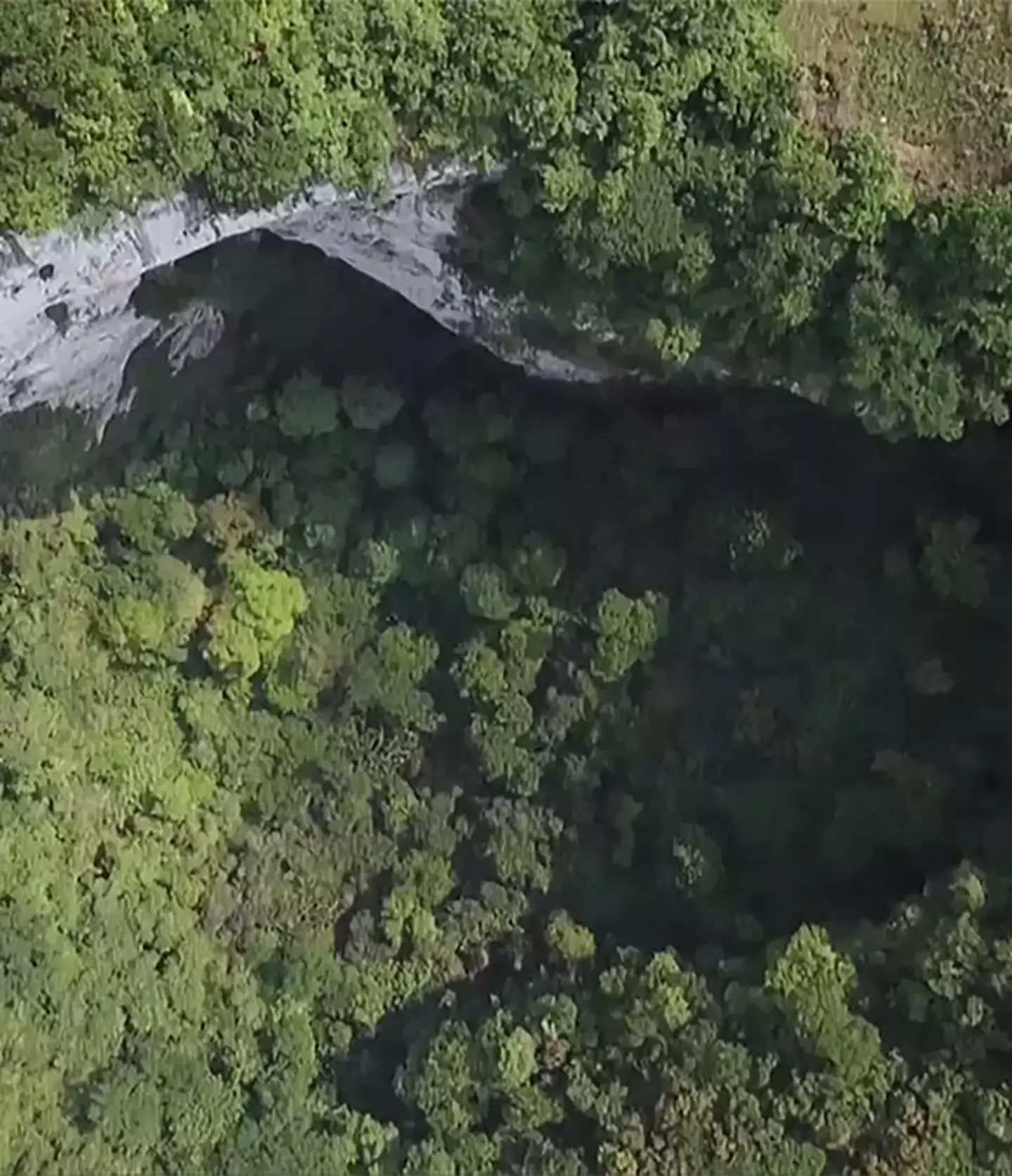China has discovered ‘limitless’ energy source that could supply enough fuel to ‘power the country for 60,000 years’
The newly-discovered material could revolutionize nuclear power production

A major discovery has been made in China, revealing a supposedly ‘limitless’ supply of energy that could reportedly power the entire country for the next 60,000 years alone.
China has become one of the leading global innovators in energy production, pioneering development with projects such as the ‘Solar Great Wall’, artificial sun, and space power station.
All of these boast the capability to eventually sustain China’s growing energy demands, especially in a push towards greener solutions. The country aims to be coal-free by 2035, and these all could play a key part in achieving the extraordinary feat.
However, one recent discovery could trump all previous efforts though, as a study has revealed that up to 1,000,000 tons of thorium have been foundin the Bayan Obo mining complex of Inner Mongolia, as reported by the Daily Mail.



Bayan Obo mining complex is home to thorium deposits, alongside countless rare earth materials (Wu Changqing/VCG via Getty Images)
While it’s not as valuable as other key material deposits that have been found in recent years, with estimates indicating that the overall value of the entire deposit is ‘just’ $178,000,000,000, it’s value is far greater as an energy resource, especially in this quantity.
It’s currently being boasted as an alternative to dominant fossil fuels due to it’s use within nuclear fission, and could provide a key route for China to dominate the global push towards nuclear energy.
Thorium isn’t a fissile, unlike uranium-232, but can be transmuted into the latter material when blasted with neutrons, making it extremely viable as a means of fuel.
On top of this, the decaying process after transmutation creates further neutrons, which are then ‘recycled’ into further thorium to produce more fuel. This is exactly why experts predict that it could power the country for the next 60,000 years, to the point where it’s almost deemed ‘limitless’.
In addition, it has been indicated that thorium is a far safer source of nuclear energy compared to uranium-235, as waste from the former becomes safe after ‘hundreds’ of years, as opposed to the ‘thousands’ of years that uranium produces, as per LabXChange.


Thorium is safer than uranium-235 when it comes to radioactive waste, but mining efforts have dispersed thorium into the air, water, and soil (Frederic J. Brown/AFP via Getty Images)
Rare earth mining efforts have been criticized in relation to thorium though, as studies have revealed that the material produced atmospheric pollution with a high radioactive risk for anyone living in the surrounding areas.
Although the Bayan Obo mining complex is the primary source of this particular discovery, it’s indicated that there are around 233 thorium-rich areas across the whole of China, and these in total far exceed previous estimates when it comes to thorium capacity.
Speaking to the South China Morning Post, one unnamed Beijing-based geologist remarked: “For over a century, nations have been engaging in wars over fossil fuels. It turns out the endless energy source lies right under our feet.”
It remains yet to be seen whether thorium can actually produce the ‘energy utopia’ that is currently being touted, especially as it has to be extracted following discovery, but it could fundamentally revolutionize energy and fuel production worldwide.Featured Image Credit: Wu Changqing/VCG via Getty Images


Published 12:21 24 Feb 2025 GMT
Scientists discover new bat coronavirus in China that sparks pandemic fears
The discovery was made five years after the Covid outbreak

Rikki Loftus
Scientists have shockingly uncovered a new bat coronavirus in China.
The discovery has sparked fears that a new pandemic could be on the horizon.
Just five years after the Covid outbreak spread across the world, scientists have found a new strain of the virus.


The new virus was discovered by scientists (TEK IMAGE/SCIENCE PHOTO LIBRARY/Getty Images)
The new virus is named HKU5-CoV-2 and is similar to the virus that causes Covid-19.
This is according to reports made by the South China Morning Post.
The research team that found the new strain was led by Zheng-Li Shi at Guangzhou Laboratory in Guangdong, China.
In a study, researchers wrote: “This study reveals a distinct lineage of HKU5-CoVs in bats that efficiently use human ACE2 and underscores their potential zoonotic risk.”
Speaking to Fox News Digital, Dr Marc Siegel, who is a clinical professor of medicine at NYU Langone Health and a Fox News senior medical analyst, said: “In this case, Shi-Zhengli discovered that a pipistrellus species of bats is carrying a HKU5-COV2 coronavirus that is a cousin of the MERS virus, which caused a limited outbreak in humans in 2012.
“This particular strain has an ability to bind to the same receptor in the lungs, nose and respiratory passages that allowed SARS-CoV-2 (COVID-19) to infect humans — so there is a chance of what is known as zoonotic spillover, where this virus could also infect humans and go human to human.”


The discovery has sparked fears of a new pandemic (Jonathan Kitchen/Getty Images)
However, while there have been fears about what this could mean for the future, the discovery doesn’t necessarily indicate that a pandemic is approaching.
The expert went on to state that he believes the risk of a new pandemic is ‘very low’ because the virus is ‘much less powerful’ than Covid-19.
Siegel continued: “Even as we continue to investigate potential human pathogens, and even as we prepare for possible pandemics, it is very important that we not give in to fear.
“The COVID pandemic is the worst in a century, but it doesn’t mean another is about to happen from bird flu or this or anything else.”
The doctor also said that he is in favor of a group of scientists being formed to help with global health protection.
He added: “That certainly did not happen with the COVID pandemic, and the cloak of secrecy remains,” he said. “But studies like this, published in a prominent journal, are a step in the right direction.
“What we know far less about is exactly what research on bat coronaviruses is being conducted in that lab.”Featured Image Credit: TEK IMAGE/SCIENCE PHOTO LIBRARY/Getty Images


Published 15:05 28 Nov 2024 GMT
Researchers in China just discovered $83,000,000,000 worth of untouched gold
The team has found over 1,000 tons of gold

Rikki Loftus
Researchers in China have just discovered $83 billion worth of untouched gold.
The news about the incredible find broke earlier this week when a research team unearthed enormous amounts of gold reserves.
The fortune was located in central Hunan province by Hunan Academy of Geology.


The gold was found in China (Pierre Longnus/Getty Images)
China is already the world’s leading producer of gold, being responsible for 10% of the entire world’s output in 2023, according to the World Gold Council.
Over 40 gold ore veins were found more than 2,000 meters deep into the ground.
And it gets even better – a whopping 300.2 tons of gold reserves were uncovered.
But how did they find it? The team used 3D geological modeling to locate the gold as well as mechanical drills to dig to the area.
Chen Rulin, who is an ore-prospecting expert, told Xinhua Net: “Many drilled rock cores showed visible gold.”
The team are planning to keep digging down to 3,000 meters, where it’s been predicted that there’s a staggering 1,000 tons of ore hiding under the surface.
All of this gold will be worth some serious money, with the discovery valued at around 600 billion yuan – which is the equivalent of $83 billion.
And that isn’t the only good fortune that’s been had by researchers recently.
Over in California, a whopping $540 billion worth of ‘white gold’ has been found.


The gold is worth $83 billion (Oat_Phawat/Getty Images)
The lithium was located at the bottom of a lake known as Salton Sea.
Scientists have estimated that this is enough material to power the batteries in 382 electric vehicles.
Michael McKibben, who is one of the study’s authors and a geochemistry professor at the
University of California, said: “This is one of the largest lithium brine deposits in the world.
“This could make the United States completely self-sufficient in lithium and stop importing it through China.”
Unbelievably, if this proves to be true then it could mean huge changes for the global economy.
First of all, the US could potentially become completely self-sufficient when it comes to lithium.
So it could be a pretty big blow to China if the US was no longer importing their EVs.
And the US would then be exporting more of its own EVs too, which would have a knock-on effect on the rest of the big exporters.
The US could increase their exports and their market share, making them more money and establishing themselves as EV leaders – something Elon Musk would certainly be celebrating.Featured Image Credit: Oat_Phawat/Pierre Longnus/Getty Images


Published 17:10 4 Jul 2024 GMT+1
Huge hidden energy source found underneath Texas that could provide reliable renewable power
This could be a game changer for Texans.

Monica Green
You might know Texas for its wealthy reserves of oil and gas, but researchers from the University of Texas at Austin have discovered that the region is ripe for geothermal energy.
We hear a lot about solar, hydro and nuclear power, but a lesser-known source is geothermal energy. And although you might not know much about it, the US is actually a world leader when it comes to geothermal energy.
In 2020, the US generated the most geothermal electricity in the world at 18,831 GWh.
Having said that, when it comes to the US’s primary energy sources, geothermal comes in bottom at around 1.6% of the total, so there’s certainly room for development.


The discovery could mean big things for Texans (yenwen/Getty)
Texas is a slight anomaly for geothermal energy generation. Usually, this type of energy is best harvested where hot water is available via permeable rock, however, using techniques borrowed from fracking, geothermal power could be generated in places like Texas where water can be injected into areas with hot subsurface rock, before it eventually gets pumped through turbines and converted into energy.
Following a 9-month report by the University, researchers concluded that an area near the southwestern Texan town of Presidio and wider areas in the county are a prime development target for this kind of renewable power.
Ken Wisian who led the study explained further: “Bottom line is the immediate area in Presidio, but the whole county looks like a really good development target”.


Discussions for Texas’ geothermal project will continue later this year (Todd Leckie / 500px / Getty)
Not only could this new discovery mean more renewable energy for the US, but also more jobs for Texans too.
There are risks to this renewable energy source though, first and foremost are earthquakes.
According to Scientific American, the drilling of the rock itself isn’t what causes earthquakes, but rather the removal of steam and returning of water back to reservoirs which in turn can cause instability along fault lines.
South Korea experienced their second largest earthquake in modern history in 2018 thanks to a geothermal plant. Consequently, the plant was shut down.
The results of this investigation from the University of Texas Austin are promising, and certainly needed as the climate crisis expands. But local leaders say next steps for Texas’s geothermal project are still some way off, though discussions on the matter will continue.Featured Image Credit: Donald Startzell / 500px Donald Startzell / 500px / Getty


Published 10:15 5 Jun 2024 GMT+1
How a huge ancient forest was discovered 630 feet down secret sinkhole in China
The ancient forest contains 130-feet-tall trees and three massive cave entrances.

Rebekah Jordan
A team of scientists have uncovered an ancient forest hidden 630 feet deep underground within a massive sinkhole in China.
The discovery was made in 2022 during an exploration of the Leye-Fengshan Global Geopark in Guangxi Zhuang – a region renowned for its karst landscapes.
Karst terrain forms when dissolving bedrock creates sinkholes due to erosion both above and below ground.
Slightly acidic rainwater, amplified by carbon dioxide from the soil, flows through cracks in the bedrock.
Over time, this water carves out underground spaces and tunnels.
When these spaces get large enough, the ground above can collapse, creating sinkholes.


X/@CGTNOfficial
Karst landscapes are characterised by other things as well like large forests, caves, springs, and natural rock bridges.
The sinkhole discovered was 1000 feet in length, 490 feet in width, and nearly 630 feet in depth, which is roughly the height of a 50-storey building!
When the explorers descended into the sinkhole, they discovered a highly preserved ancient forest with 130-foot-tall trees and three massive cave entrances.
Interestingly, researchers suggest that these caves could contain several unidentified species of plants and animals, which just adds to the excitement of the expedition.

·
30th giant karst sinkhole discovered in south China’s Guangxi
According to UNESCO, the Geopark where the sinkhole was discovered is described as a ‘territory of caves’, featuring the ‘world’s longest natural bridge’.
The website explained: ‘The UNESCO Global Geopark is primarily sedimentary with more than 60 per cent of 3000m thick Devonian to Permian carbonate rocks.
‘It forms an ‘S’-shaped structure and a rhombus configuration in the karst areas of Leye and Fengshan counties respectively, which controlled two large subterranean rivers’ development, the Bailang and Poyue.’


Greece-China News/Pexels
George Veni, the executive director of the National Cave and Karst Research Institute, explained that karst landscapes can vary significantly worldwide due to differences in their geology and climate among other factors.
‘In China, you have this incredibly visually spectacular karst with enormous sinkholes and giant cave entrances and so forth,’ he explained.
‘In other parts of the world, you walk out on the karst and you really don’t notice anything. Sinkholes might be quite subdued, only a meter or two in diameter.’
Southern China is famous for its karst landscapes filled with sinkholes, forests, and caves. But China as a country boasts the most karst sites globally, with over 10,000 formations.
The largest is not Geopark sinkhole is not the largest however.
This crown goes to Xiaozhai Tiankeng sinkhole – also known as The Heavenly Pit – with a volume of 130 million cubic metres.
Measuring 2, 100 feet deep and 2,000 feet long, this sinkhole is home to over 1200 species of plants and animals and even includes a waterfall within its depths.






